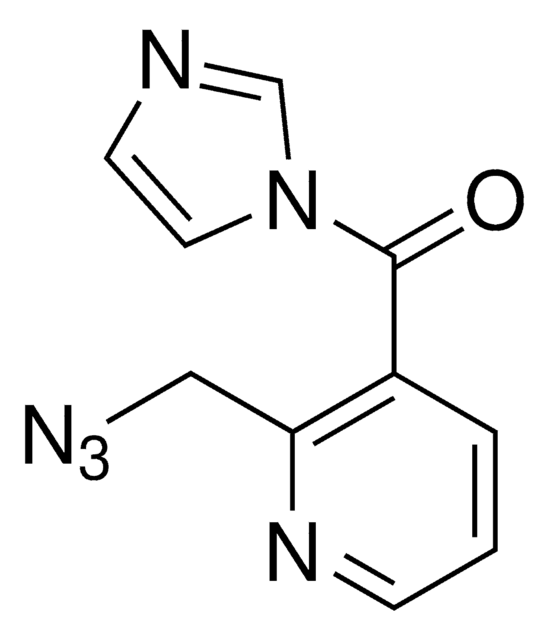913839
2-Methylnicotinic acid imidazolide
Synonym(s):
(1H-imidazol-1-yl)(2-methylpyridin-3-yl)methanone, 1H-Imidazol-1-yl(2-methyl-3-pyridinyl)methanone, 3-(1H-imidazole-1-carbonyl)-2-methylpyridine, NAI, RNA SHAPE probe, RNA structure probe, mNAI
About This Item
Recommended Products
form
powder
Quality Level
mp
68-72 °C
storage temp.
2-8°C
InChI
1S/C10H9N3O/c1-8-9(3-2-4-12-8)10(14)13-6-5-11-7-13/h2-7H,1H3
InChI key
OWQPEDNXDCVXJO-UHFFFAOYSA-N
Application
Other Notes
Guidelines for SHAPE Reagent Choice and Detection Strategy for RNA Structure Probing Studies
SnapShot: RNA Structure Probing Technologies
Structural Analysis using SHALiPE to Reveal RNA G-Quadruplex Formation in Human Precursor MicroRNA
Determination of in vivo RNA structure in low-abundance transcripts
Related product
Storage Class
11 - Combustible Solids
wgk_germany
WGK 3
flash_point_f
Not applicable
flash_point_c
Not applicable
Certificates of Analysis (COA)
Search for Certificates of Analysis (COA) by entering the products Lot/Batch Number. Lot and Batch Numbers can be found on a product’s label following the words ‘Lot’ or ‘Batch’.
Already Own This Product?
Find documentation for the products that you have recently purchased in the Document Library.
Our team of scientists has experience in all areas of research including Life Science, Material Science, Chemical Synthesis, Chromatography, Analytical and many others.
Contact Technical Service







